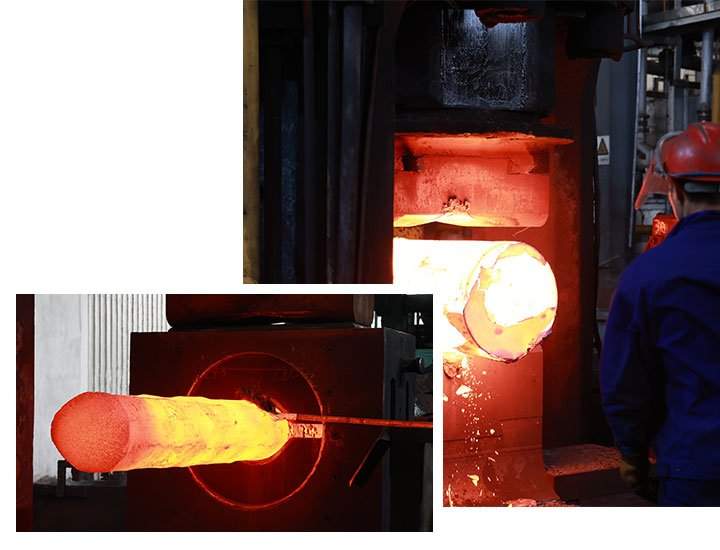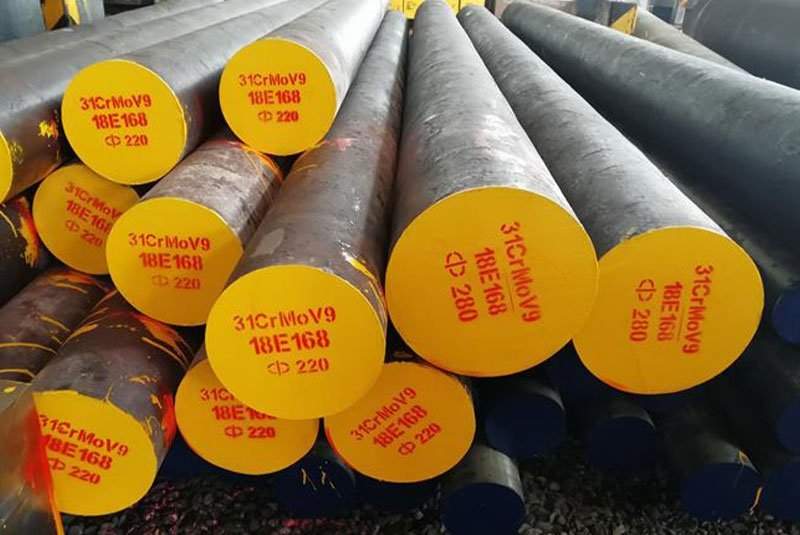Introduction

Low alloy steel plays a crucial role in various industries due to its enhanced mechanical properties and resistance to environmental factors. Selecting the right low alloy steel for your specific industrial needs can significantly impact the performance and longevity of your projects. This comprehensive guide will explore the types, applications, benefits, and selection criteria for low alloy steel, helping you make informed decisions for your industrial requirements.
What is Low Alloy Steel?
Low alloy steel is a type of steel that contains additional alloying elements in amounts typically less than 5% by weight. These elements, such as chromium, nickel, molybdenum, and vanadium, improve the steel’s mechanical properties, including strength, hardness, and resistance to corrosion and wear. Low alloy steel is widely used in construction, automotive, aerospace, and various other industries due to its versatility and durability.
Types of Low Alloy Steel
Low alloy steels are classified based on their alloying elements and applications. Here are some common types:
Chromium-Molybdenum Steel
- Characteristics: High strength, good toughness, and excellent resistance to corrosion and oxidation.
- Applications: Pressure vessels, pipelines, and high-temperature environments.
Nickel Steel
- Characteristics: Improved toughness, higher strength, and good impact resistance.
- Applications: Structural components, heavy machinery, and cryogenic applications.
Manganese Steel
- Characteristics: High impact strength and resistance to abrasion.
- Applications: Mining equipment, railroad tracks, and heavy-duty machinery.
Vanadium Steel
- Characteristics: Increased strength and toughness, with excellent fatigue resistance.
- Applications: Automotive parts, tools, and high-strength structural applications.
Silicon-Manganese Steel
- Characteristics: Enhanced strength, ductility, and wear resistance.
- Applications: Springs, structural beams, and railway components.
Key Benefits of Low Alloy Steel
Low alloy steel offers several advantages over carbon steel, making it a preferred choice for various industrial applications.
Enhanced Strength
The addition of alloying elements significantly increases the tensile and yield strength of low alloy steel, making it suitable for demanding applications.
Improved Toughness
Low alloy steel retains its toughness and ductility even at low temperatures, ensuring reliability and safety in critical applications.
Corrosion Resistance
Alloying elements like chromium and nickel provide low alloy steel with superior resistance to corrosion, extending the lifespan of components exposed to harsh environments.
Wear Resistance
Low alloy steel exhibits excellent wear resistance, reducing maintenance costs and downtime in abrasive environments.
Versatility
With a wide range of alloy compositions and properties, low alloy steel can be tailored to meet specific performance requirements across various industries.
Selecting the Right Low Alloy Steel
Choosing the right low alloy steel involves understanding your project requirements and matching them with the appropriate steel grade. Here are the key factors to consider:
Mechanical Properties
Evaluate the required strength, hardness, toughness, and ductility for your application. Different alloying elements will influence these properties in various ways.
Corrosion Resistance
Consider the environmental conditions and the potential exposure to corrosive elements. Select a low alloy steel grade that offers adequate corrosion resistance.
Wear Resistance
For applications involving high wear and abrasion, choose a low alloy steel with superior wear-resistant properties.
Fabrication Requirements
Determine the ease of fabrication, including welding, machining, and forming. Some low alloy steels may require special techniques or equipment.
Cost
Balance the cost of the material with its performance benefits. Higher alloy content typically increases the price, but the improved properties may justify the investment.
Standards and Specifications
Ensure the selected low alloy steel meets industry standards and specifications relevant to your application. Common standards include ASTM, SAE, and ISO.
Table: Comparison of Common Low Alloy Steel Grades
Below is a comparison table of some common low alloy steel grades based on key properties:
| Grade | Alloying Elements | Tensile Strength (MPa) | Yield Strength (MPa) | Corrosion Resistance | Wear Resistance | Typical Applications |
|---|---|---|---|---|---|---|
| 4130 | Cr, Mo | 670 | 435 | Moderate | Good | Aerospace, automotive, pressure vessels |
| 4140 | Cr, Mo | 655 | 415 | Moderate | Good | Shafts, gears, heavy machinery |
| 4340 | Ni, Cr, Mo | 1080 | 745 | High | Excellent | Aircraft landing gear, power transmission |
| 8620 | Ni, Cr, Mo | 620 | 360 | Moderate | Good | Gears, crankshafts, fasteners |
| A514 | Cr, Mo, Mn | 690 | 760 | Low | High | Structural applications, construction |
| HY 80 | Ni, Cr, Mo | 690 | 550 | High | High | Submarine hulls, pressure vessels |
Applications of Low Alloy Steel

Low alloy steel is utilized across various industries due to its favorable properties. Here are some key applications:
Construction
- Structural Components: Used in bridges, buildings, and other infrastructure projects due to its high strength and durability.
- Reinforcement Bars: Provides enhanced strength and corrosion resistance in concrete structures.
Automotive
- Engine Parts: Crankshafts, gears, and other critical components benefit from the improved toughness and wear resistance of low alloy steel.
- Body Frames: Used in vehicle frames for added strength and impact resistance.
Aerospace
- Aircraft Components: Low alloy steel is used in landing gear, engine parts, and other high-stress areas due to its high strength-to-weight ratio.
- Spacecraft: Utilized in structural components and fasteners that require both strength and resistance to extreme conditions.
Energy
- Oil and Gas: Pipelines, pressure vessels, and drilling equipment benefit from the corrosion and wear resistance of low alloy steel.
- Power Generation: Used in turbines, generators, and other high-temperature applications.
Heavy Machinery
- Mining Equipment: Low alloy steel’s wear resistance is ideal for machinery operating in abrasive environments.
- Construction Equipment: Used in loaders, excavators, and other heavy-duty machinery for its durability and strength.
Conclusion
Selecting the right low alloy steel for your industrial needs involves understanding the specific requirements of your application and matching them with the appropriate steel grade. By considering factors such as mechanical properties, corrosion resistance, wear resistance, and cost, you can make an informed decision that ensures the success and longevity of your projects. Low alloy steel’s versatility and enhanced properties make it a valuable material across various industries, from construction and automotive to aerospace and energy.
FAQ
What is the main difference between low alloy steel and carbon steel?
The main difference lies in the addition of alloying elements in low alloy steel, which enhance its mechanical properties, corrosion resistance, and wear resistance compared to carbon steel.
How does alloying improve the properties of steel?
Alloying elements such as chromium, nickel, molybdenum, and vanadium improve steel’s strength, toughness, hardness, and resistance to corrosion and wear.
Can low alloy steel be welded easily?
Weldability of low alloy steel depends on the specific grade and alloying elements. Some grades may require preheating or special welding techniques to avoid issues like cracking.
What are common standards for low alloy steel?
Common standards include ASTM (American Society for Testing and Materials), SAE (Society of Automotive Engineers), and ISO (International Organization for Standardization).
How does the cost of low alloy steel compare to other materials?
Low alloy steel is generally more expensive than carbon steel due to the added alloying elements, but it offers superior properties that can justify the higher cost in demanding applications.
What industries benefit most from using low alloy steel?
Industries such as construction, automotive, aerospace, energy, and heavy machinery benefit from the enhanced properties of low alloy steel.
Are there environmental considerations when using low alloy steel?
Low alloy steel’s improved durability and resistance can lead to longer component life and reduced material waste, offering environmental benefits in terms of sustainability.
How can I determine the right low alloy steel grade for my project?
Consider factors such as required mechanical properties, environmental conditions, fabrication requirements, and cost to select the appropriate grade. Consulting with a materials engineer can also be helpful.
What are the typical heat treatment processes for low alloy steel?
Common heat treatment processes include annealing, quenching, and tempering, which are used to enhance the steel’s mechanical properties and performance.
How does low alloy steel perform at high temperatures?
Low alloy steel grades designed for high-temperature applications maintain their strength and resistance to oxidation, making them suitable for use in power generation and chemical processing industries.
